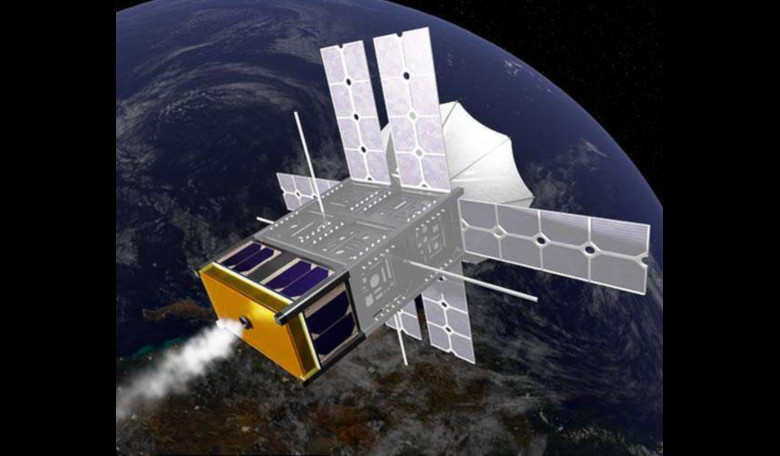Miniaturised satellites made up of multiples of 10 x 10 x 10 centimetre cubic units have made a huge impact on space research since their introduction in 1999.
Better known as CubeSats, these small satellites are often constructed from commercial off-the-shelf components making them relatively cheap to build. As such they are often used to demonstrate spacecraft technologies intended for larger satellites or to conduct experiments where their low costs can justify higher risks.
Two small units working in tandem have even made their way to Mars.
As of 4 October 2020, more than 2700 CubeSats have been launched into space, 1400 of which are NanoSats, and this number is set to double in the next six years.
But despite their uses there is one feature stopping them from reaching their full potential; a good propulsion solution.
It is estimated that less than 10 percent of CubeSats built so far have included a means of propulsion.
Without one, CubeSats are at the mercy of gravity and will be dragged back down through the atmosphere to burn up in reentry even if still fully functional.
Soon however, that could change as engineers at Howe Industries have come up with a breakthrough engine design that utilises a simple and abundant molecule – water.
Presently, satellites often make use of ‘energetic' propulsion systems that typically consume toxic, highly pressurised or even explosive liquids, such as hydrazine, for power. These are then adapted and scaled down for smaller units.
This lends itself to problems when launching as the biggest challenge with CubeSat propulsion is preventing risk to the launch vehicle and its often more expensive primary payload.
Similarly, many CubeSats are deployed from the International Space Station but any satellite propulsion might pose a risk to the station and personnel so instead CubeSats are “ejected” into orbit and free-fly instead.
Howes’ design could be one way to mitigate these problems. Dubbed the ThermaSat steam engine, the propulsion system uses water that is flashed into superheated steam in the instant before expanding out of the nozzle.
Even better, say Howe Industries, the self-sufficient, plug-n-play ThermaSat requires no power from the satellite unlike traditional propulsion options. Nor are there bulky, protruding reflectors to obstruct the mission objectives.
Smaller than a loaf of bread, the ThermaSat has only two moving parts and delivers enough total impulse (1,800 Ns with 1 kilogram of water) to maintain a CubeSat in a Low Earth Orbit (LEO) altitude of 375 kilometres for more than five years.
This represents a huge potential savings in satellite replacement, says Howe.
The ThermaSat can also be used on missions in the ionosphere as low as 250 kilometres (155 miles). Without propulsion at this altitude, a CubeSat would normally come crashing down after just a few weeks, but the ThermSat will be able to stay aloft for months.
"The heart of the system is the unique thermal capacitor, made from phase-changing materials, which concentrates and stores the solar heat collected from just 20 square inches of exposed surface area", according to Jack Miller, R and D engineer for the ThermaSat program. "Using a combination of photonic crystals and gold-tinted mirrors the completely inert capacitor reaches a blistering operating temperature of 1,052 K (778.85 degrees celsius) . This results in a specific energy comparable to a lithium-ion battery, but without the potential for explosion."
In light of current space junk problems, the ThermaSat can be used for collision avoidance, scheduled deorbiting and to raise orbits.
One problem of existing propulsion systems is that they require substantial power to operate, so it means siphoning energy from the primary payload, Howe says.
The ThermaSat doesn’t, so potentially it be deployed as a “strap-on propulsion unit” when servicing/upgrading larger satellites.
But perhaps most exciting say its designers, is because ThermaSat can enable rapid constellation deployment, it will be extremely beneficial to the new class of smart, autonomous satellites that are able to relay data and even to 'swarm' together for specific tasks.
"The ThermaSat steam engine overcomes these obstacles while fulfilling other must-have requirements for a successful CubeSat propulsion system", Howe Industries CEO, Dr. Howe concludes.











